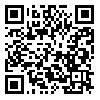BibTeX | RIS | EndNote | Medlars | ProCite | Reference Manager | RefWorks
Send citation to:
URL: http://ioh.iums.ac.ir/article-1-1125-en.html
Background and aim: Dermal exposure is one of the prominent exposure routes in automotive repair. Exposure to polycyclic aromatic hydrocarbons can lead to adverse effects like cancers. Accordingly, it is necessary to evaluate these exposures .
Methods: In this study, application of DREAM method in three automotive repair jobs were investigated Dermal exposure through deposition, emission and transmission routes in all part of human body were calculated. Results for potential and actual exposure was evaluated in terms of jobs and grouped in different exposure groups were examined .
Results: The highest emission exposure (μ = 31.97, SD = 27.28) and transition (μ = 8.79, SD = 6.3) was observed in the gearbox workers. Deposition was only observed in Electrician (μ = 0.54, SD = 0.94). Gearbox workers had highest potential and actual exposure via transmission route. Actual and potential exposure was highest in hand region. However, electricians had the highest degree of exposure in rest of body. Emission exposure was the main route of exposure in all groups .
Conclusion: DREAM can be used to evaluate dermal exposure causes and also assess the effectiveness of protective equipment. It also can identify areas that need improvement in protection. In this study there was no difference in actual and potential dermal exposure. It means that factors such as bad housekeeping, inappropriate use of protective equipments are the main causes and should be corrected
Received: 2013/11/21 | Accepted: 2014/08/30 | Published: 2014/12/15
| Rights and permissions | |
 |
This work is licensed under a Creative Commons Attribution-NonCommercial 4.0 International License. |





